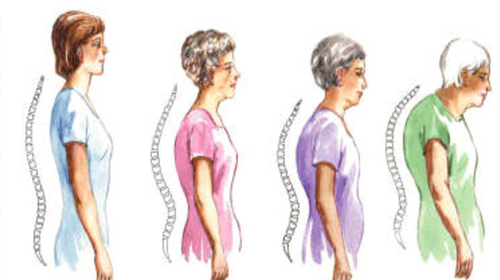Osteoporosis is often known as a ‘silent’ disease because it can exist within the body, slowly stripping away the bone’s structure, for years without any symptoms at all. The first sign of osteoporosis may be when you fall or trip and sustain a fracture. This kind of bone brittleness is a good indicator of osteoporosis as it can mean that the bones have been losing calcium and strength. There’s really only one reliable way to check for bone health, and that’s with a bone density test – and anyone over the age of 50 should be getting a bone density test done at some point in order to attain the level of bone health. There are a number of risk factors that are associated with osteoporosis and I wanted to discuss some of these here with you. Hopefully you’ll be able to use some of these tips to help your own health and family.
Risk factors that you can control
You can control a number of the potential risk factors for osteoporosis, and it makes sense that if you can, you should! Let’s have a look at the risk factors that you can control here:
- Diet: If you follow a diet that is high in calcium and Vitamin D, you’re putting yourself into a great position for avoiding osteoporosis. If you’re not getting enough calcium, however, you might need to think about taking osteoporosis supplements made from algae or some other kind of supplement as a means to getting your calcium intake for the day.
- Physical activity: If you’re more physically active, you’re going to be stimulating your osteoblasts which promote the generation of bone tissue with calcium and this will lead to healthier bones in general. Physical activity that is weight bearing (so things like running, jumping and climbing) is going to be best for your body.
- Body weight: If you’re over the recommended healthy weight range for your body, you’re going to be placing excess strain on your bones and on your body. This can weaken the bones and place you at greater risk of osteoporosis. Make sure that you’re always keeping an eye on your weight as this will ensure that you’re optimising your health.
- Smoking: If you smoke, you’re compromising your body’s health – and not just that of your bones. Optimise your health and quit smoking. If you need help with it, just speak to your doctor.
- Alcohol: Excessive alcohol consumption is going to damage your body and your bone health, so if you know that you’re drinking too much you should try to limit your drinking to the medically recommended amount.
- Medications: Certain medicines can wreak havoc on your body, and can play a role in how the health of your bones continues. Make sure that you consult with your doctor when you’re thinking about the health of your bones in regards to your medication.
Risk factors that you can’t control
There are some key contributors to the deterioration of your bone health that you cannot control, but it helps to stay aware of them so that you can be vigilant in your awareness of osteoporosis.
- Aging: Getting older is a natural rite of passage but as we age, so too do our bones, and so it’s important that you stay on top of things with bone density checks with your GP – pretty much the only way that you can find out if you are at risk of osteoporosis.
- Sex: You have a greater risk of getting osteoporosis if you are a woman. Sad, but true. If you’re a woman, make sure that you know you’re getting enough calcium in your diet. Women have smaller bones than men and they lose their bone density faster as well, so stay on top of things.
- Ethnicity: Caucasian women and women of Asian descent are more likely to get osteoporosis. African American and Hispanic women are also at risk, but much less so.
- Hereditariness: If you have a family member who has a history of osteoporosis, you’ll find that there’s a greater chance that you’ll have it too.
I hope that you’ve found this information about osteoporosis and the risks associated with it useful and that you’ll be able to manage your bone health in the future.
Article Submitted By Community Writer




